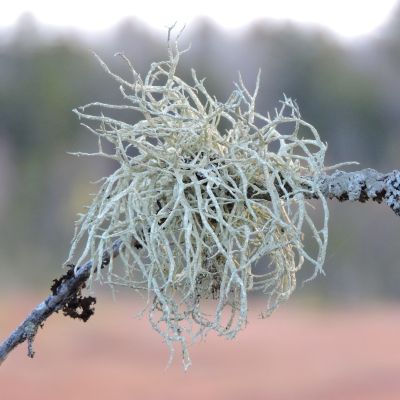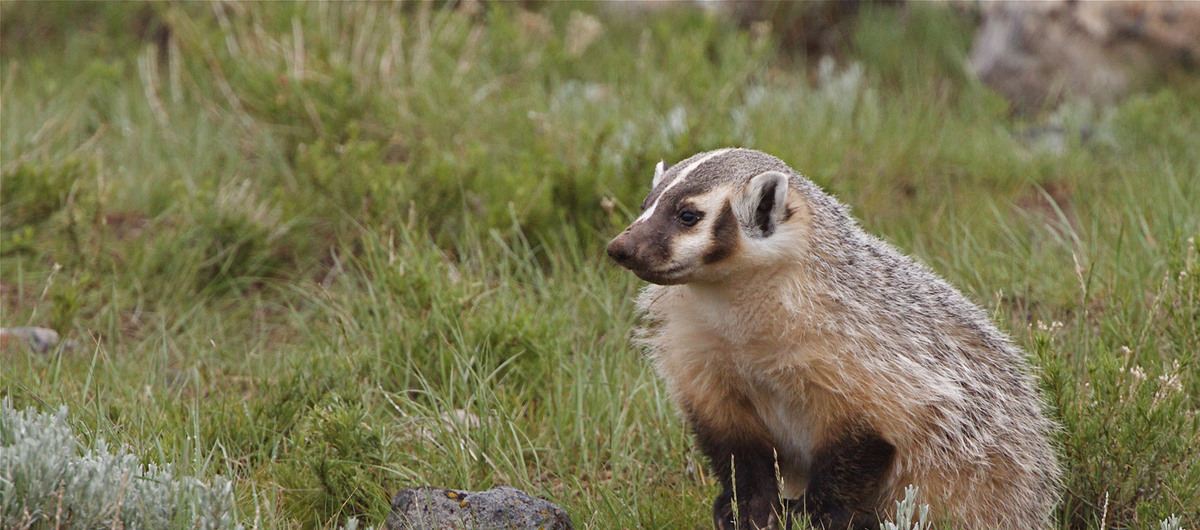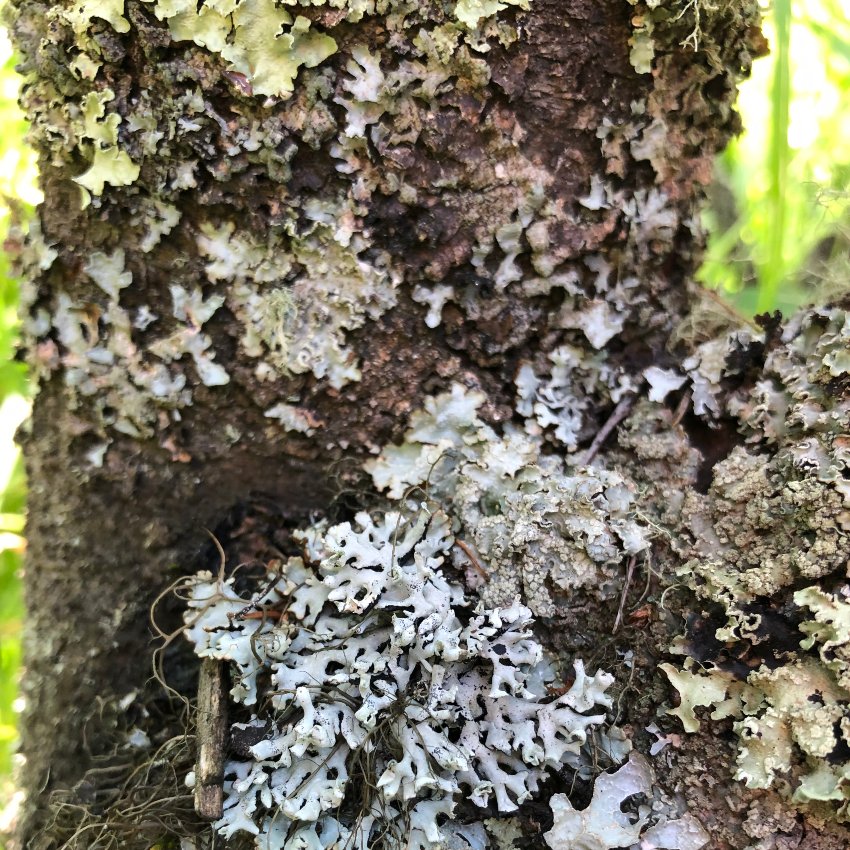
The RECCAP Project
Categories: Environmental Monitoring
Status: Completed
About the Project
The RECCAP project—Retrospective Evaluation of Contaminants in Cryptogams in the Alberta Oil Sands Region Partnership—is exploring the use of ABMI data and specimens to determine environmental contaminant levels and their effects.
We are using both (i) archived ABMI bryophyte and lichen samples and (ii) ABMI community and ecological data to determine contaminant levels and biodiversity responses at a landscape level. We are also exploring innovative methods for contaminants biomonitoring using cryptogams.
This project is currently focused on the Athabasca Oil Sands Region (AOSR). Methods and analyses are being conducted in partnership with Wood Buffalo Environmental Association (WBEA) and its associated consultants, including Dr. Matt Landis (Senior Research Environmental Health Scientist at U.S. Environmental Protection Agency) and Dr. Shanti Berryman (Ecologist and Community Engagement Specialist at Founder Integral Ecology Group).
The ABMI is excited to be working on a collaboration leveraging its extensive archival collections.
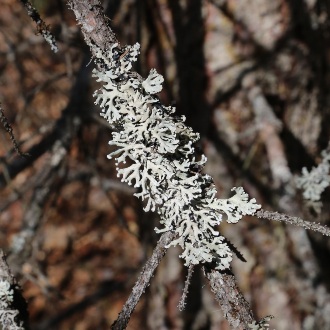
Hypogymnia physodes (Hooded Tube Lichen), one of our study species (Photo: Diane Haughland)
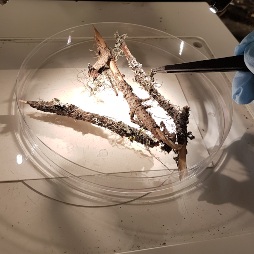
Sampling lichens for chemical analysis
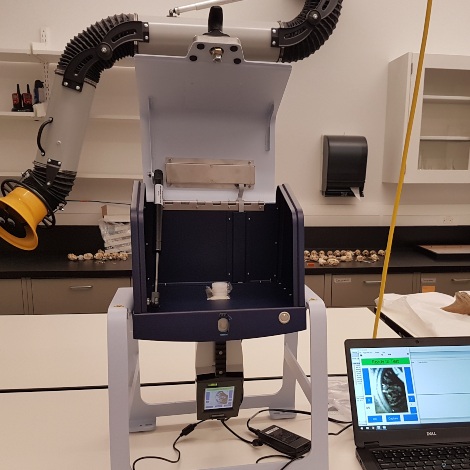
Analyzing contaminants using x-ray technology
The atmospheric deposition, persistence, and accumulation of contaminants such as heavy metals are an under-assessed potential threat to biodiversity. In Alberta, anthropogenic sources of contaminants include industrial processes, fossil fuel combustion, waste incineration, and transportation. Organic nitrogen and sulfur compounds are also released into the environment from activities such as agriculture and fossil fuel combustion. Permanent ambient air-quality monitoring stations are strategically located across Alberta and provide data for tracking trends near specific communities and industrial facilities.
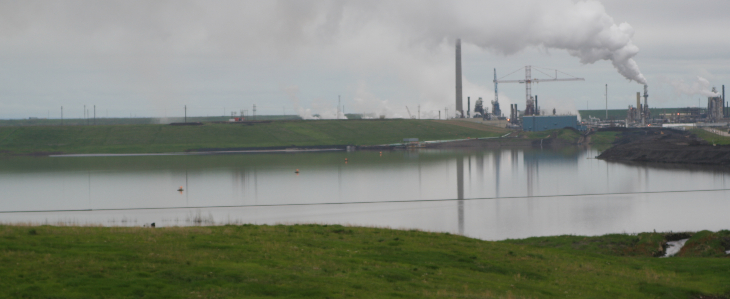
Oil Sands Region (Photo: Diane Haughland)
Our Approach
Existing research on the utility of herbarium specimens for studying contaminants shows mixed success. Herbarium conditions themselves can contaminate specimens, obscuring environmental signals from collection sites. We are analyzing Hypogymnia physodes and Pleurozium schreberi from the ABMI’s collection at the Royal Alberta Museum for nitrogen, sulfur, and six heavy metals. These levels will be compared with contaminant gradients generated by WBEA for the Oil Sands Region using Hypogymnia physodes collected with "clean" protocols intended for contaminants monitoring.
If ABMI specimens show promise in producing sufficiently similar results, there is great potential to study air quality across Alberta over time using ABMI specimens. Conversely, if ABMI specimens generate mixed results, we will explore new clean protocols for the sampling and storage of future lichen and bryophyte collections to enable contaminants monitoring.

Boreal forest
Determining contaminant levels can be an expensive process that results in the destruction of the specimens being studied. RECCAP is exploring the use of a portable x-ray fluorescence (pXRF) machine for contaminants monitoring. pXRF is a relatively inexpensive method to measure elemental composition that produces results in real time. Most importantly, it is also a non-destructive method, allowing samples to be retained and re-examined in the future. A further aim is to establish a standardization between results from potentially non-destructive in-house analysis with the pXRF to those from ultra-sensitive elemental analysis using ICP-MS. ICP-MS generates precise measures of elements within samples but requires these to be milled to a powder and destroyed during analysis. Both intact and milled specimens will be analyzed using pXRF, and their pxRF outputs will be compared with ICP-MS results. We are interested in the sensitivity and accuracy of the pXRF results and in their utility in guiding the need for further ultra-sensitive lab analysis.
The goal is to identify the potential impacts of contaminants on Alberta’s biodiversity of bryophyte and lichen communities. We will use non-metric multidimensional scaling to explore the ABMI lichen and bryophyte data for community structure. Further, we will examine the correlations between the resultant community axes and environmental covariates (including forest type; biogeographical variables; stand age; and atmospheric contaminants' proximity, direction; and position along estimated sulphur and nitrogen exposure gradients) to determine if there are detectable gradients in community structure correlated with environmental factors.

Pleurozium schreberi (Big Red Stem Moss)
Photo: Brittney Miller
Biomonitoring and Cryptogams
Biomonitors are living organisms used to study the atmospheric deposition and accumulation of contaminants. They can be used to complement and fill gaps in air-quality assessments where permanent monitoring infrastructure is either prohibitively expensive or logistically impractical. Cryptogams (lichens and bryophytes) have been used as biomonitors for decades to track changes in air quality. They indiscriminately accumulate particles from the air, making them ideal biomonitors. Our analyses are focused on Hypogymnia physodes (Hooded Tube Lichen), and Pleurozium schreberi (Big Red Stem Moss). Both are widespread in Alberta and often locally abundant, making them ideal species for a regional biomonitoring program.
The Peltigera project aims to expand our understanding of Peltigera lichen diversity in Alberta through genetic markers. Building on the research done by global Peltigera experts, we hope to use genetic data to both verify our identifications and detect new species to the province.
The Edmonton Lichen Biomonitoring project works to create a lichen-based citizen science biomonitoring tool for Edmonton in order to learn more about the city’s air quality.
The ABMI works with the Biodiversity Management Framework (BMF) Science and Technical Committee within Alberta Environment and Protected Areas (EPA) to support the development of indicators for the frameworks, including those relating to species, communities, and habitat.

